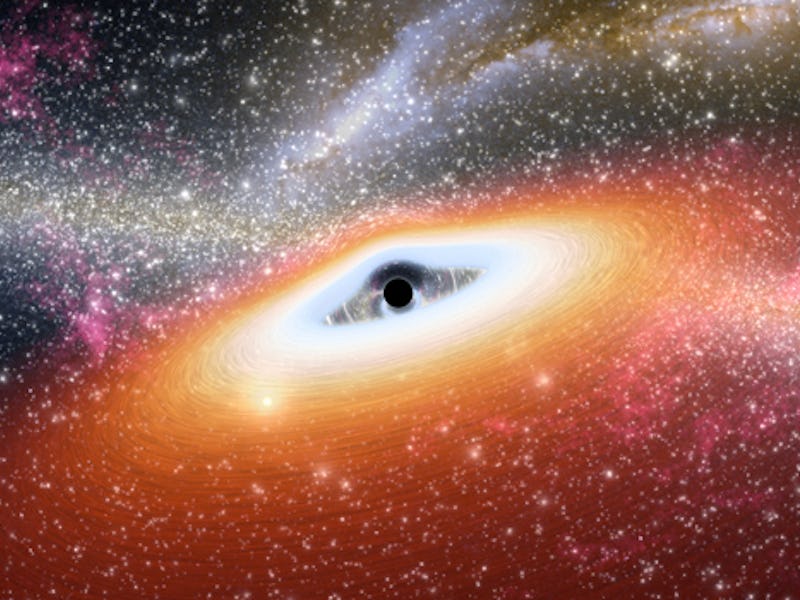Earlier this year, astronomers at the University of California, Berkeley found a strange cosmic behemoth: a rogue supermassive black hole. This record-breaking celestial monstrosity — with a mass roughly equivalent to 17 billion suns — was just chilling, in a seemingly empty pocket of space. The unusual finding prompted researchers to think that black holes are more ubiquitous than originally thought. Now, a team of researchers has developed a way to test just how common they are.
A team of physicists, led by Avery Broderick and Mansour Karami of the University of Waterloo, developed a method they claim will be able to detect roughly 10 black holes per year — essentially doubling the number currently detected in a two-year period. The research is published in the Astrophysical Journal and could help physicists unravel the mysteries surrounding black holes in the next decade.
“Within the next 10 years, there will be sufficient accumulated data on enough black holes that researchers can statistically analyze their properties as a population,” Broderick explained in a news release. “This information will allow us to study stellar mass black holes at various stages that often extend billions of years.”
Black holes are tricky beasts — since they gobble up any material that ventures too close, they are nearly impossible to image directly. Physicists know very little about what makes these cosmic beasts ticks, but scientists do know that they play an integral part in the life cycle of stars and help regulate the growth of galaxies.
“We don’t yet know how rare these events are and how many black holes are generally distributed across the galaxy,” said Broderick.
They were once thought to be seldom found in the universe, but new data suggests they are a lot of more common than we think.
This is exciting news for scientists. Earlier this year we saw the first observational proof of their existence as the Laser Interferometer Gravitational-Wave Observatory (LIGO) detected the first ever gravitational wave signature, which emanated from two colliding black holes.
“For the first time,’ said Broderick, “we’ll be placing all the amazing dynamical physics that LIGO sees into a larger astronomical context.” Being able to find more and more black holes essentially offers us a better way of scanning the universe for other potential events that may produce gravitational waves.
